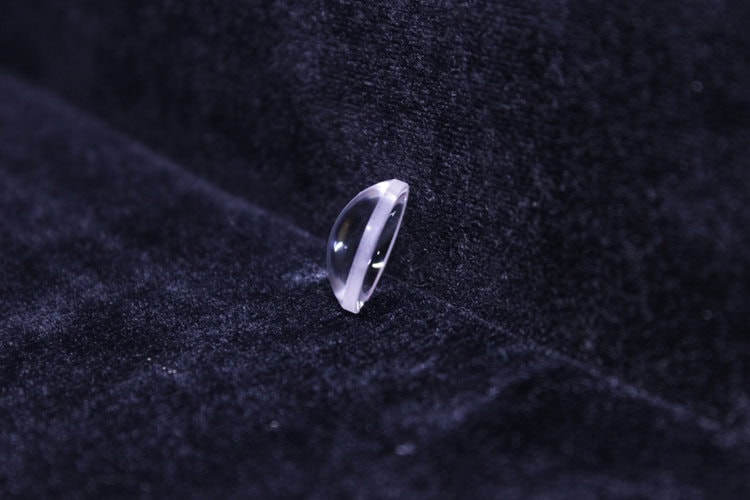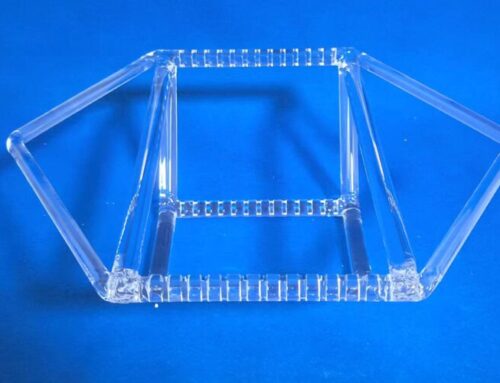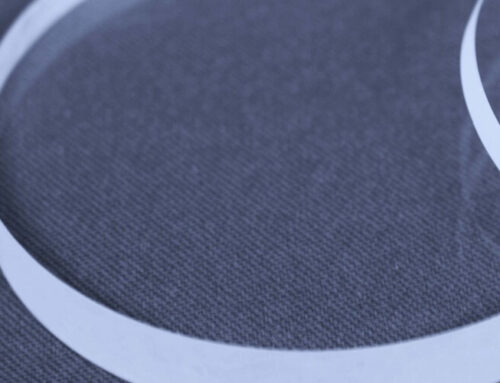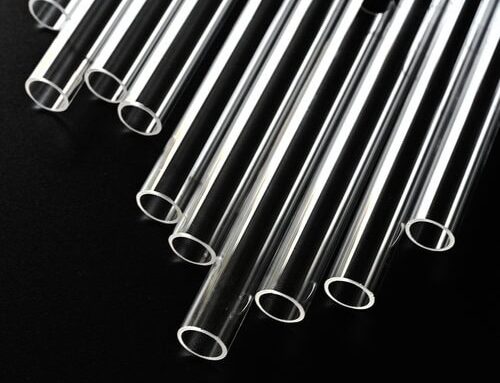The manufacturing processes of quartz glass lens mainly include the following steps:
- Raw material preparation
The raw material of quartz glass is high-purity silicon dioxide, which is strictly screened and treated to ensure the high purity and quality of the raw material.
- Melting and forming
Once the raw material has been melted, precision forming processes, such as molding, centrifugation, pouring, etc., are employed to produce the quartz glass lens blank that meets the design specifications.
- Processing and polishing
The blank of quartz glass lens is precision-machined and polished to achieve the specified size, shape and surface quality. In the processing process, it is essential to monitor and control temperatures, speed and other parameters, to prevent defects such as cracks and scratches in the quartz glass.
- Testingand coating
The optical properties and structural integrity of quartz glass lens are rigorously tested to guarantee product quality. In order to enhance the optical properties of quartz glass lens, optical films, including anti-reflection and reflection films can be coated according to the requirements.
Application fields of quartz glass lens
Quartz glass lens has a wide range of applications in the field of optics, including the following aspects:
- The fieldof laser
Quartz glass lens exhibits high transmittance, low dispersion, high thermal stability and other characteristics, and is suitable for all kinds of lasers and optical components in laser equipment, such as laser cutting, laser welding, laser marking, etc.
- Cameras and video cameras
The use of quartz glass lens in cameras, video cameras and other optical imaging equipment has been demonstrated to achieve high-quality imaging effects, an improvement in shooting clarity and a reduction in colour difference.
- Medical apparatus and instruments
The utilization of quartz glass lens in medical devices, including endoscopes and microscopes, enables the attainment of high-definition and high-contrast imaging, thereby facilitating accurate diagnoses by medical professionals.
- Scientific research and laboratory
The application of quartz glass lens in scientific research and laboratory settings, such as spectrometers and optical sensors, enables the attainment of highly precise and stable measurement outcomes.
- Aviation and aerospace
The utilization of quartz glass lens in the field of aviation and aerospace, such as in satellite optical systems and optical remote sensors, enables the attainment of high transmittance and high thermal stability.
As a material with excellent optical properties, quartz glass has significant advantages in the field of lens. With the continuous development of optical technology, quartz glass lens will become increasingly prevalent in a range of applications.





